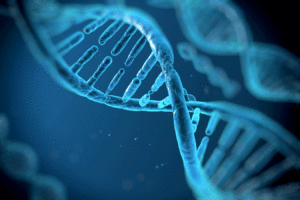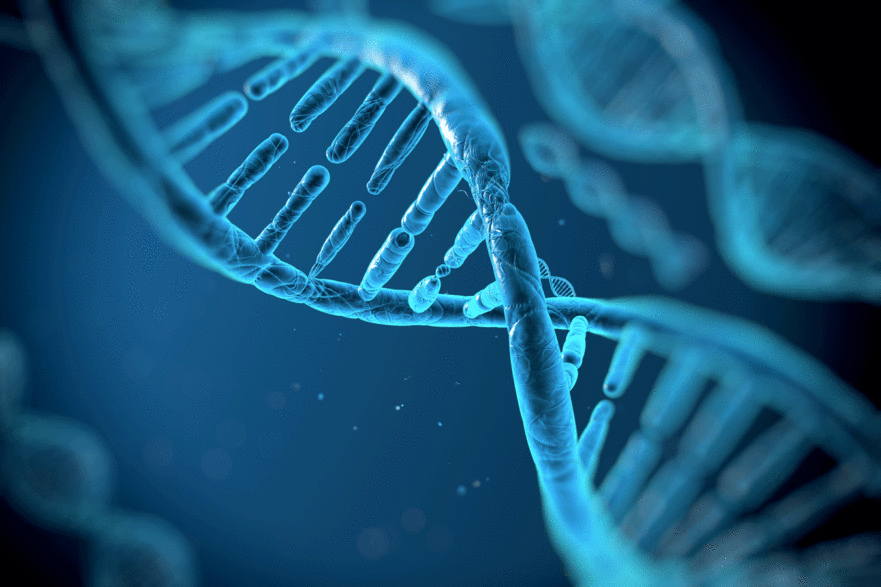 As a society, we are intrigued with knowing our origins – who our ancestors were and what they did. But what about our own genetics? What can our own genes tell us about our bodies, health, and lives? Though more to the point, what can we learn from our ancestors that can help us to lead healthier and longer existences?
As a society, we are intrigued with knowing our origins – who our ancestors were and what they did. But what about our own genetics? What can our own genes tell us about our bodies, health, and lives? Though more to the point, what can we learn from our ancestors that can help us to lead healthier and longer existences?
The Human Genome Project is a perfect example of our fascination with genetics and what we can learn from our DNA. Since the Human Genome Project was completed in 2003, approximately twenty-five thousand genes have been identified in the human body, and a wealth of information has become available about how nutrition impacts our genes at the cellular level to create health or disease.
The growing science of Nutrigenomics, a new discipline that studies the relationship between nutrition, genetics, and health, is a direct result of this project. Nutrigenomics is based on the simple premise that dietary chemicals affect the expression of genes – for health, fat loss, and longevity.
One gene that was mapped out by the project, which can be significantly impacted by nutrition, is the ‘ancestral gene’. While it has been recognized as the alzheimer’s gene, in the medical field, its existence has yet to be incorporated into the health and fitness world – especially regarding the Paleo diet.
So what is the ancestral gene?
Let’s go back about 2 million years or so when our ancestors were still leading arboreal lives, living high up in the trees. There they had an abundance of bark and leaves to eat, and as they swung from limb to limb, collecting food from the branches, they ate only what was fresh. Thus, their long intestines were able to ferment the fresh fruit and vegetable substances into fatty acids, producing the lipids and cholesterol necessary for their bodies to function properly and efficiently.
Then, at a pivotal moment in history, our ancestors climbed down, out of the trees, and began to incorporate wild game into their diet. With their improved menu of animal based foods, their intestines began to shorten, causing them to need help absorbing as much fat as possible from their meals (see the Expensive Tissue Hypothesis).
As the food they were eating was less fresh than the bark and leaves they previously ate, they required a higher inflammatory response in order to survive a greater range of bacteria. Consequently, our ancestors who carried the ApoE4 gene were better suited to a terrestrial lifestyle.
But the evolution of this gene only begins there. About 200 thousand years later, a new variant of the gene formed as a result of our ancestors’ increasingly diverse diets and sanitation capabilities: ApoE3. Individuals with this variant experience a less potent inflammatory response and fat absorption rate resulting in healthier brains and hearts. Followed by a third variant, ApoE2, which may be more protective against Alzheimer’s and Cardiovascular disease.
What does this mean for you?
Well, it all depends upon which variation of the gene you carry. For the majority of us, we carry two copies of the ApoE3 gene, while about 25% of the population also carries a single copy of the ApoE4 gene – those with one of each are recognized as ApoE3/4. Though, an even smaller percentage, about 2%, are unfortunate enough to carry two copies of ApoE4. Those with two copies are at a greater risk for cardiovascular disease and dementia.
Consequently, those with even just one copy of ApoE4 (about a quarter of the population) have a substantially higher risk of heart disease and Alzheimer’s than those without it.
The good news is that once we know whether or not we carry the ApoE4 gene, we can modify our diets and lifestyles accordingly to account for the risk factors associated with the gene.
How can you manage the effects of this gene through diet?
If you have one or two copies of ApoE4, consider modifying your version of the Paleo diet by reducing your consumption of saturated fatty Acids (SFAs) and increasing your consumption of monounsaturated fatty acids (MUFAs)
Here are some simple suggestions:
Although red meat and full-fat dairy may work for a lot of people, if you have the ApoE4 gene try eating more fatty fish, especially shellfish, and other wild sourced seafoods, while also removing or significantly reducing dairy from your diet.
As an alternative to saturated fats, try consuming liberal amounts of olive oil and avocados – both of which are high in monounsaturated fats. Olive oil, in particular, is loaded with polyphenols – an excellent source of antioxidants.
And of course we know that physical activity played an important role in human evolution. As recent studies have shown, lifestyle factors, especially those regarding exercise, can have a substantial and positive affect on the aging brain and physical longevity – especially for those who carry the ApoE4 gene.
What has this taught us?
As scientists and other health officials continue to explore the human genome and Nutrigenomics, we are constantly reassessing our bodies and how to best take care of them. The Paleo diet is no exception. As one may see, the Paleo diet is not a rigid set of rules about what we should eat based on what cavemen ate millions of years ago, rather, it is an ever changing set of guidelines about eating clean and healthy foods based on our DNA. As we learn more about our evolution, we can continue to adapt our diets and lifestyles for increased health and longevity.
If you would like to learn more about your DNA, you can visit 23andMe, and receive a copy of your complete genome by simply sending in a sample of your DNA. This will allow you to know which variation of the gene you have, as well as any other gene you might want to know about.

